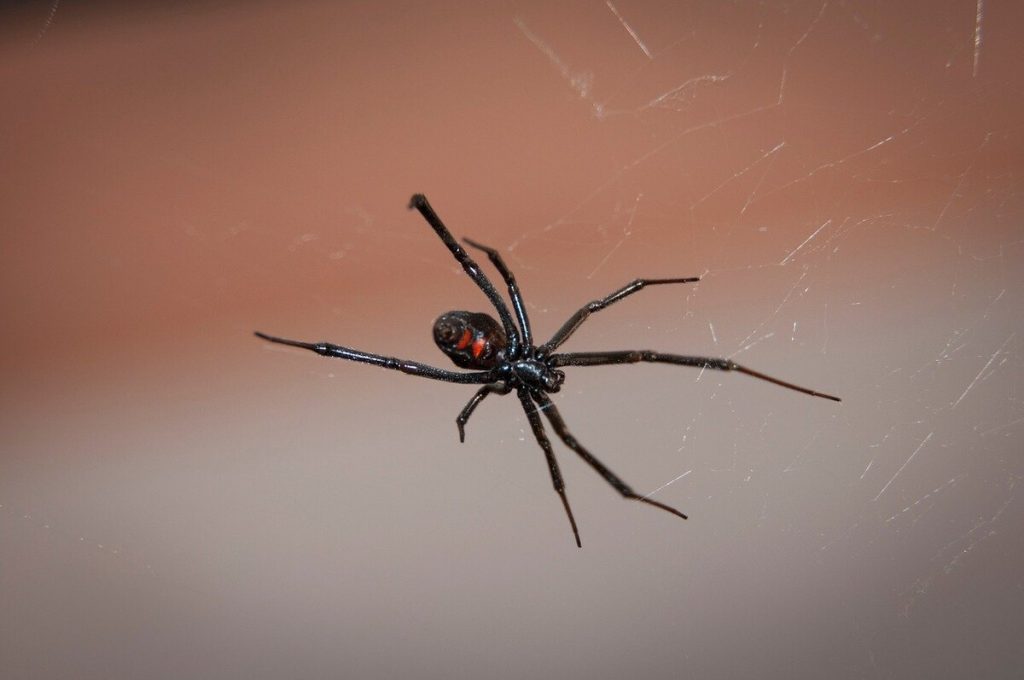Black widow spiders can be dangerous to kids. Toxic bites to pets and elderly people can result in numbness, nausea, and many muscle pains, as well as potentially fatal consequences. The most effective strategy to keep your house safe and maybe deadly. The most outstanding defense against black widows is to remove them from your home entirely with Peace of Mind Pest Control and use presentation techniques to prevent their return. Let’s discuss avoiding these spiders and the indicative symptoms of a black widow infestation.
Black Widow Identification:
- Look: The female black widow has a reddish-hued hourglass shape on its stomach. Young spiders and male black widows have red dots all over their bodies. These spiders can also be recognized by their long, spindly legs and big abdomens.
- Size: Female black widow spiders’ bodies range from 3 to 10 millimeters, making them comparatively large spiders. When considering the length of their legs, certain female spiders can reach up to 38 millimeters. Male black spiders normally grow to a maximum length of less than half an inch from tip to tip.
- Webs: Black widow webs are tangled, untidy-looking, and frequently constructed close to the ground, unlike most other spiderwebs. Suppose you see holes between the tangled web’s triangular structure, between the strands; its likely to belong to a black widow.
Signs of Infestation:
- Egg Sacs: About half an inch in diameter, black widow egg sacs are ten or cream spherical bulbs. As the mating season draws to a finish in the late summer, you will typically observe them. Multiple egg sacs indicate a strong infestation.
- Several Webs: In shadowy and awkward areas, black widows produce multiple webs. Seek for disorganized, knotted webs in dim, secluded spaces like crawl spaces, sheds, or waste piles. You have more spiders, the more webs you can see.
- Visible Spiders: You may have a problem if you see several black widows, especially female ones, either dead or alive. Given the gregarious nature of black widows, multiple spiders in one place are probably signs of a well-established infestation.
Symptoms and Effects: Black widows do not bite aggressively but will attack with great venom if they sense danger. The following are a few symptoms:
- Fever, chills, and perspiration
- A pinprick feeling at first, then localized discomfort and swelling
- Extending from the biting site are muscle spams.
- Cramps and nausea
- Numbness radiating from the wound
- Discomfort in your back, chest, and stomach
Professional Black Widow Removal:
- In addition to carefully inspecting the area where you first saw the spiders, an exterminator will survey the entire area of your property to determine the extent of the infestation and the locations of spider hiding places.
- Depending on the extent and location of your infestation, they will strategically apply potent residual pesticides to kill the spiders and prevent future infestations.
- Our Pest Control Lodi team will conduct inspections and follow-up visits to ensure effective treatment.
Preventative Measure Against Black Widow Spider:
- Regular Cleaning will prevent black widows from taking over your garage, attic, shed, or basement. They prefer undisturbed hiding spots and nest Locations.
- Discourage Other Insects: Removing food sources for black widows can help deter these pests. Use bug-resistant yellow sodium vapor lamps and surround your yard with herb gardens or diffusers for fragrant oils.
- Take Care Of Your Yard: To keep spiders out of the area, mow your lawn and remove leaf piles regularly.
- Seal Gaps: Caulking gaps or cracks around doors and windows eliminates potential access points for black widow spiders. Replace or repair screens with holes along your windows and doors for more uniform protection.
In Conclusion, keeping your property free from these harmful pests requires constant protection and quick response. To prevent them from returning, we advise routine inspections of your yard, garage, basement, and attic, in addition to proactive preventative measures like routine cleaning and lawn care.
Read the full article here









